Great Design Plant: Agave Vilmoriniana
http://decor-ideas.org 03/08/2015 21:13 Decor Ideas
While you normally wouldn’t describe a succulent as being graceful, it is one of the first words that comes to mind when you see the curved leaves of octopus agave (Agave vilmoriniana). This agave species has a tropical look and is somewhat unique among agaves with its smooth-edged leaves. In fact, the only pointy part of this agave is at the end of its long, fleshy leaves.
This Mexican native thrives in both sunny and light shade conditions and is ideal for use in drought-tolerant gardens, where its graceful leaves add great textural contrast.
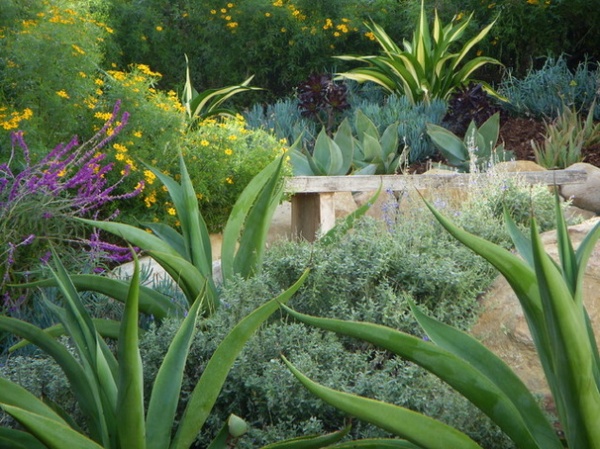
Botanical name: Agave vilmoriniana
Common name: Octopus agave
Origin: Native to the northwestern regions of Mexico, including Sonora, Sinaloa and Durango
Where it will grow: Hardy to 25 degrees Fahrenheit (USDA zone 9; find your zone)
Water requirement: Drought tolerant once established but does best when watered deeply twice a month in the summer and once a month in spring and fall
Light requirement: Full sun to light shade; avoid areas with reflected sun
Mature size: Up to 3 feet tall and 4 to 5 feet wide
Benefits and tolerances: Drought tolerant
When to plant: Fall or spring from plantlets produced from its flowering stalk
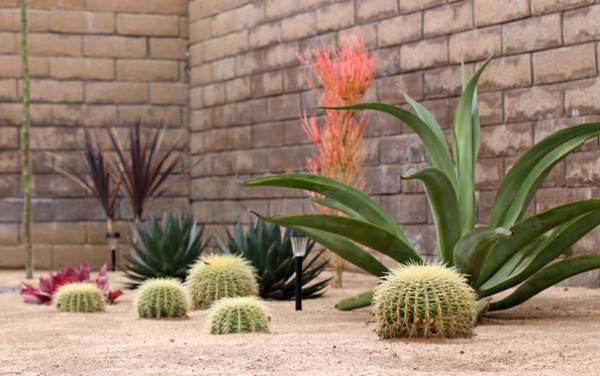
Distinguishing traits. The leaves of octopus agave are thick and fleshy, particularly at their base. The leaves arch and curve as they grow, lending a beautiful shape to the drought-tolerant garden. Mature specimens of this agave, with their curving “arms,” resemble an octopus, hence its common name.
Its leaves are an attractive light green with a tinge of blue and are smooth on the sides, but each leaf does have a terminal spine at the tip. Simply snip off this spine with hand pruners in areas with foot traffic.
Shown: Octopus agave growing among golden barrel cactus (Echinocactus grusonii), Sticks on Fire (Euphorbia tirucalli ‘Sticks on Fire’) and Blue Glow agave (Agave ‘Blue Glow’)
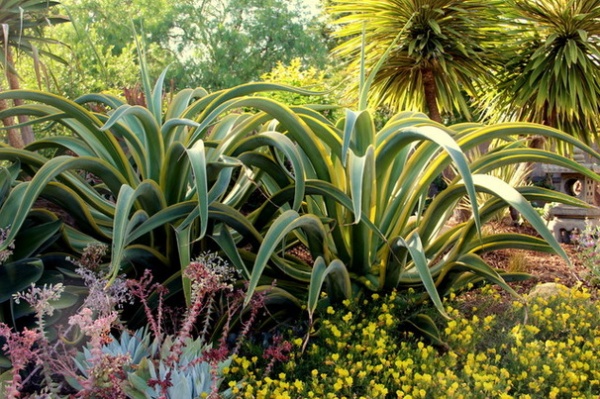
The ideal exposure for this agave is filtered shade, especially in the low desert, although it can be grown in full sun. Avoid placing octopus agave in areas that receive hot, reflected sun, where it can struggle and turn yellow from the intense heat.
Like other agave species, it has a leaf that channels water toward the base of the plant and root zone. While drought tolerant, octopus agave looks best when watered deeply every 10 to 14 days in summer and once a month in winter.
Variegated forms of octopus agave are also available, such as A. vilmoriniana ‘Variegata’ and ‘Stained Glass’, shown here, which have yellow coloring on the edges of the leaves.
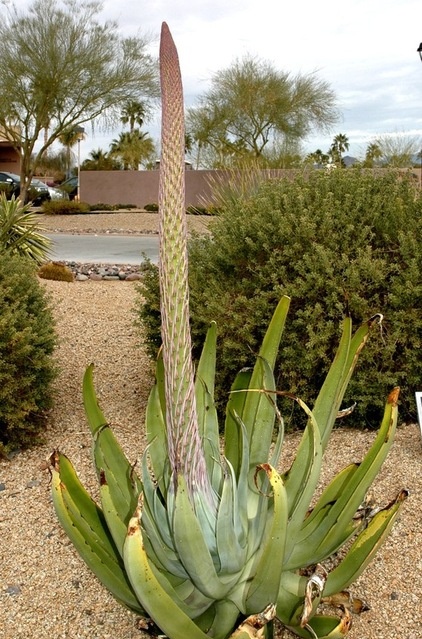
This fast-growing agave reaches its mature size within two years of planting when given supplemental water. A large flowering stalk will appear seven to 10 years after planting. The rate of growth of the stalk is impressive; it seemingly grows several inches per day.
Shown: Octopus agave sending up its flowering stalk
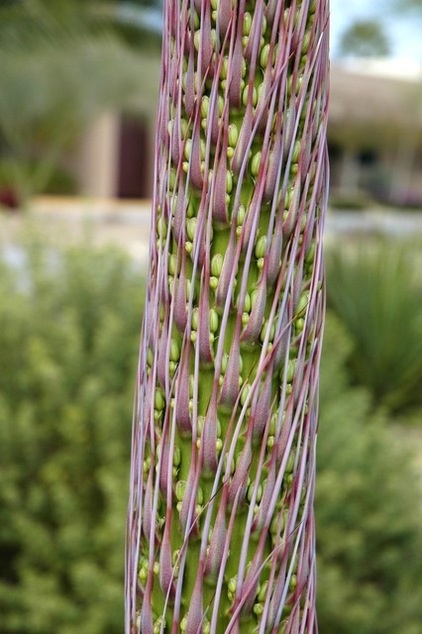
Tiny bulbils (plantlets) can be seen on young stalks, which is how octopus agave reproduces.
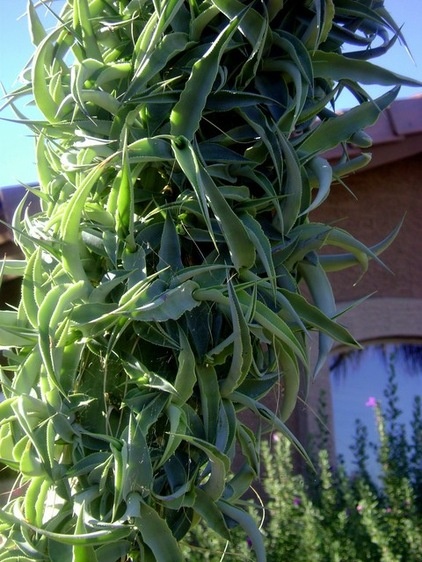
The bulbils grow into miniature agave plants, which can be removed and planted in the garden where they will grow.
The parent plant will decline and die within months of flowering, as with the majority of agave species. However, you can plant one or more of the small bulbils from the flowering stalk, which will grow into beautiful, mature octopus agave — you’ll never have to buy a new agave plant again.
Shown: Octopus agave plantlets on the flowering stalk.
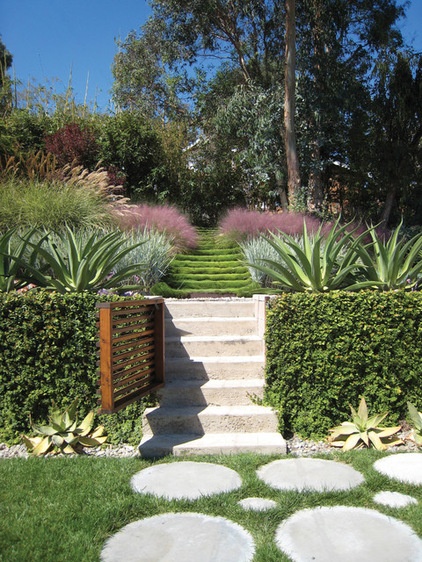
How to use it. Octopus agaves are versatile in the landscape. They are equally at home underneath the wispy shade of mesquite (Prosopis spp) or palo verde (Parkinsonia florida) trees and look great when planted in a group of succulents, including cactuses. For an informal design, plant ground covers such as angelita daisy (Tetraneuris acaulis), blackfoot daisy (Melampodium leucanthum) or purple trailing lantana (Lantana montevidensis) around octopus agave. For textural contrast add this agave to a wildflower garden.
Shrubs that look great alongside octopus agave include autumn sage (Salvia greggii), blue bells (Eremophila hygrophana ‘Blue Bells’), pink fairy duster (Calliandra eriophylla) and Valentine bush (Eremophila maculata ‘Valentine’). For a contemporary design, plant octopus agave in straight rows in front of pink muhly (Muhlenbergia capillaris) ornamental grass or behind a row of golden barrel cactuses.
Succulents make great container plants, and this agave is no exception. Octopus agave makes a statement planted by itself in a large container.
3 Steps to Creating Quick, Easy and Colorful Succulent Containers
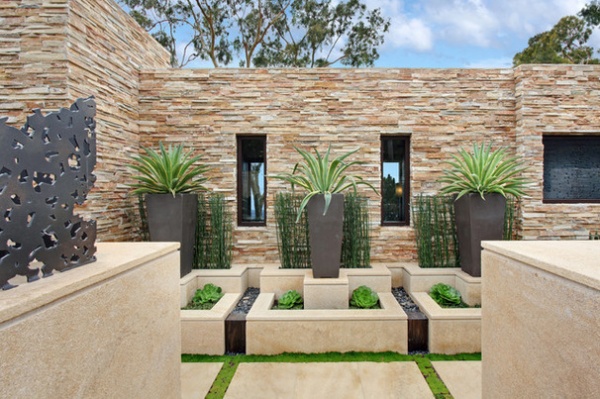
Planting notes. Plant it in well-drained soil. If you’re planting it in a container, use a potting mix that is specially formulated for succulents and is fast-draining.
Exposures with full sun or filtered shade are best. In low-desert areas, avoid spaces that receive hot afternoon sun.
Water deeply every 10 to 14 days if the leaves turn yellow in summer; they should green up again once the cooler temperatures of fall arrive. Alternatively, you can move the agave to an area with filtered shade.
More: Grow a Garden of Succulents for Easy Beauty
Related Articles Recommended












